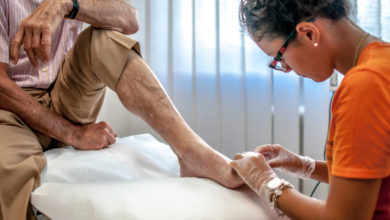If you are interested in becoming a doctor, you might have heard of a DO (Doctor of Osteopathic Medicine) degree. This article discusses what exactly osteopathic medicine is including its history and status today.
There are two main forms of medicine in the United States: allopathic and osteopathic. Students trained in allopathic medicine are given a MD (Doctors of Medicine) degree and those trained in osteopathy are awarded a DO (Doctor of Osteopathic Medicine) degree. Most people know about the more traditional allopathic medicine, but what is osteopathic medicine?
History
Dr. Andrew Taylor Still founded osteopathic medicine in 1874 mainly because of his disappointment in the prevailing medical thought in the time. Still believed that conventional medicine was not effective and treated the disease rather than the person. His experience evidenced that medication, surgeries and other therapies caused more harm than good. Thus he developed osteopathic medicine to be a system of medical care that would promote the body’s innate ability to heal itself.
This new system of medicine was received with hostility l by the medical establishment at the time. While the American Medical Association (AMA) made some effort to discredit osteopathic medicine, by 1969, the AMA approved a measure to allow qualified DO physicians to be full and active members of the AMA. This measure was the first step to having MD and DO doctors work side by side in AMA-approved intern and residency programs.
Today
Osteopathic medicine is based on the following tenets:
1. The body is a unit, and the person represents a combination of body, mind and spirit.
2. The body is capable of self-regulation, self-healing and health maintenance.
3. Structure and function are reciprocally interrelated.
4. Rational treatment is based on understanding the body unity, self-regulation and the interrelationship of structure and function.
DOs stress a holistic approach to medicine, which looks at the whole person rather than as a collection of organ systems and body parts that may become injured or diseased. This does not mean MDs do not look at the whole person, rather MDs are traditionally known to take more of a problem-based or disease-based approach. The DO holistic approach also emphasizes integrating patients into the health care process as a partner. DOs value constant communication and follow-up with their patients. The American Association of Colleges of Osteopathic Medicine (AACOM) states that DOs “consider the impact that lifestyle and community have on the health of each individual, and they work to break down barriers to good health.” This philosophy is one key reason why many DO medical students choose to practice primary care.
||Read: Difference Between MD and DO||
Osteopathic medicine provides all the benefits of modern medicine in addition to the advantages of the osteopathic manipulative medicine (OMM), which focuses on hands-on diagnosis and treatment. Osteopathic physicians, known as DOs, are licensed to practice the full scope of medicine in all 50 states. They can practice medicine in any specialty from family practice to aerospace medicine and are recognized as equals to MDs. Although DOs can practice any type of medicine, as mentioned earlier, the osteopathic medical profession has a strong heritage of producing primary care physicians. Many DO graduates gravitate toward primary care because the osteopathic philosophy works very well in a primary care setting and also because many students who go to DO schools are originally interested in primary care.
DO schools and physicians are doing their part to battle the growing physician shortage, especially in primary care. Nearly 1 in 5 medical students are attending an osteopathic medical school. More than 20 percent of U.S. medical students are training to be osteopathic doctors resulting in over 4,200 new DO physicians every year. Although the percentage of DO medical students who want to become primary care physicians is declining, still more than 60% of DOs are primary care physicians.
||Read: Should I Apply to DO Schools?||
The DO education and training curriculum is the same as an MD’s. DOs also go to medial school for four years (biomedical and clinical sciences for the first two years and followed by two years of core clinical training). DOs must also pass the Comprehensive Osteopathic Medical Licensing Examination (COMPLEX) which is similar to the United States Medical Licensing Examination (USMLE) for MDs to become licensed. DOs have the option to take the USMLE if they wish to take an MD residency. Close to 50% of osteopathic medical students take the USMLE and COMLEX. Like MDs, DOs must undergo residency training as well optional additional fellowship training for certain specialties.
||Read: Boards as an Osteopathic Student – COMLEX vs. USMLE||
References:
1. https://www.osteopathic.org/inside-aoa/about/aoa-annual-statistics/Documents/2012-OMP-report.pdf
2. https://www.kevinmd.com/blog/2011/03/osteopathic-medicine-growth-graduates-physicians.html
3. https://www.aacom.org/become-a-doctor/about-osteopathic-medicine



